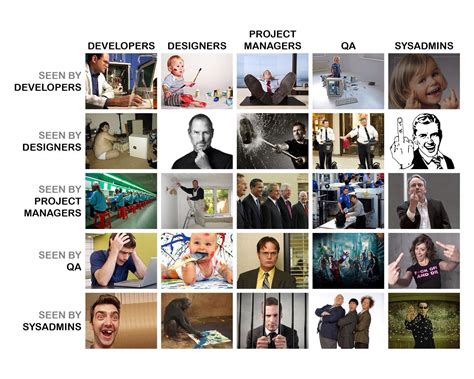How It People See Each Other
Ronan Farrow
Apr 04, 2025 · 3 min read

Table of Contents
How People See Each Other: The Psychology of Perception
We all perceive the world through our own unique lens, shaping how we see ourselves and others. This perception, a complex interplay of cognitive processes and social influences, significantly impacts our interactions and relationships. Understanding this process is crucial for navigating social dynamics effectively and fostering stronger connections. This post delves into the psychology behind how people see each other, exploring the factors that influence perception and offering insights into building more positive relationships.
The Building Blocks of Perception: From Sensation to Interpretation
Our perception isn't a passive reception of reality; it's an active construction. It begins with sensation, the raw sensory data our senses gather. This data is then processed and interpreted, leading to perception, our subjective understanding of the world. This interpretation is heavily influenced by several factors:
1. Personal Experiences:
Our past experiences, both positive and negative, act as filters, shaping our expectations and interpretations of current situations. Someone who has been betrayed in the past might be more likely to perceive others as untrustworthy, even without evidence. This pre-existing framework colors our judgment, impacting how we see others' intentions and behaviors.
2. Biases and Stereotypes:
Cognitive biases, inherent mental shortcuts, can lead to inaccurate judgments. For example, confirmation bias might cause us to seek out information confirming existing beliefs about someone, ignoring contradictory evidence. Similarly, stereotypes, oversimplified generalizations about groups of people, can lead to unfair and inaccurate assessments of individuals. Recognizing and challenging these biases is crucial for fair and accurate perception.
3. Social Context:
The situation and social setting profoundly affect how we perceive others. The same person might be perceived differently at a formal event versus a casual gathering. The social cues present, the group dynamics, and even the physical environment play a role in shaping our perceptions.
4. Emotional State:
Our current emotional state heavily influences our perception. When we are stressed or anxious, we might be more likely to misinterpret others' actions as hostile or threatening. Conversely, a positive mood can make us more open to seeing the best in others. Understanding our emotional state helps us to moderate our perceptions.
Improving How We See Each Other: Strategies for Enhanced Perception
While completely eliminating bias is impossible, we can work towards more accurate and empathetic perception:
1. Active Listening:
Truly listening – paying attention not just to words but also to tone, body language, and context – is crucial. Active listening helps us understand the other person's perspective and reduces the chance of misinterpretation.
2. Perspective-Taking:
Consciously trying to see things from another person's point of view enhances empathy and understanding. Consider their background, experiences, and motivations to gain a more complete picture.
3. Mindfulness and Self-Reflection:
Regular self-reflection can help us identify our own biases and emotional responses. Mindfulness practices encourage present-moment awareness, improving our ability to observe and interpret information without judgment.
4. Seeking Diverse Perspectives:
Engaging with people from different backgrounds and viewpoints broadens our understanding and challenges our preconceptions. This exposure helps us avoid the pitfalls of narrow perspectives and promotes more accurate perceptions.
Conclusion: Towards a More Empathetic World
How we see each other is fundamental to our relationships and societal interactions. By understanding the psychological factors influencing perception and actively working to mitigate biases, we can cultivate more accurate, empathetic, and constructive interactions. The journey towards better perception is a continuous process of self-awareness, active listening, and a commitment to understanding others. This conscious effort fosters healthier relationships and a more harmonious society.
Featured Posts
Also read the following articles
| Article Title | Date |
|---|---|
| How Does Car Accident Settlement Work | Apr 04, 2025 |
| How Far Can A Buck Smell Doe Urine | Apr 04, 2025 |
| How Do Portable Hand Washing Stations Work | Apr 04, 2025 |
| How Does Pool Play Work In Baseball | Apr 04, 2025 |
| How Does A Workers Comp Settlement Affect Medicare | Apr 04, 2025 |
Latest Posts
-
How Long Do You Leave Citristrip On
Apr 05, 2025
-
How Long Do You Have To Wear Rubber Bands
Apr 05, 2025
-
How Long Do You Have To Water New Turf
Apr 05, 2025
-
How Long Do You Have To Keep Divorce Papers
Apr 05, 2025
-
How Long Do You Have To File Domestic Abuse Charges
Apr 05, 2025
Thank you for visiting our website which covers about How It People See Each Other . We hope the information provided has been useful to you. Feel free to contact us if you have any questions or need further assistance. See you next time and don't miss to bookmark.
